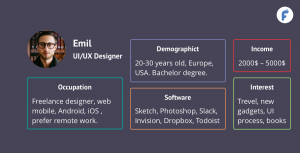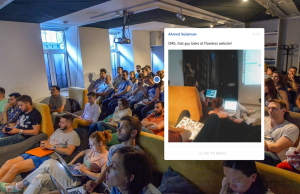How can a startup promote a product without a budget?
Together we will figure out how to find a market, tell the right story about value, and choose relevant media channels to convey this value. Market analysis is the first and most important step. Let’s imagine that you are making the most popular Telegram bot, about which “everyone” should know. Without prior research, all marketing activities will be random attempts to do something for someone who is not clear. Therefore, first of all, research the market – analyze potential users and competitors.
How to understand who your user is (User Research)
You don’t need a marketing degree or a separate analyst to do basic research. Moreover, it is the job of the founders of a startup to determine the target audience, value and product plan (ideally, to work out the entire business model canvas). For example, our plan for user analysis consisted of such tasks.
- Create a user portrait (User Persona).
- Find potential users.
- Write hypotheses and interview questions.
- Chat – call, meeting, interview, presentation to users, chat, questionnaire.
- Analyze information and correct User Persona.
- Create a marketing plan. Adjust the product line, if necessary.
Our user research has spanned over two years and is ongoing. During this time we talked with a huge number of people and learned a lot. The first version of Flawless App was conceived as a collaboration service for designers and developers that would automate routine tasks (transferring guidelines and comparing design / result). We assumed that our users would be mobile teams in grocery, outsourcing companies, agencies, and just freelancers.
Based on initial assumptions, we made User Persona – this is a combined image of the target audience. When creating User Persona, we were interested in: the role and type of work, demographics, income level, hobbies, favorite software. We also tried to predict online and offline platforms where the user spends time.

Emil Wolski, a designer whom we later met personally. After talking with Emil, it turned out that he was not our target audience at all, and most of our assumptions were false. The second example is a persona for a mobile developer, which also turned out to be very far from reality. Fortunately, after drawing up fictitious personas, we still decided to chat with real people.
The first step in validating our personas was communication with a close circle of acquaintances. Me and Ahmed (Ahmed Suleiman – one of the creators of Flawless App) wrote to all my friends who were somehow connected with product companies and startups. We were given general advice and motivation, but we still did not understand who our users were.

Further, we Googled that the study is a solid questionnaire that tests each item of the hypothesis. Great, this is exactly what we needed! Now we’ve asked fellow mobile designers and developers to answer 14 open-ended questions. We asked how they solve the problem of transferring guidelines now, what are the difficulties and how our future product can help. At the time of the creation of this huge questionnaire, we did not yet have a finished product. Only a few people answered. We spent a couple of weeks but still couldn’t finalize our user portrait.
For a launched product, it is important to work with real users and product analytics:
- Select active users and arrange calls with them. Find out the maximum feedback on the product. Ask how and where they would sell your product.
- Conduct ethical Google on your users. Look at the person’s social media activity, projects, articles, interests, and friends/followers.
- Analyze all product analytics and superimpose the results on what users have told you.
- Start talking to the most experienced people who could use your product. Ask about the development strategy and high-level feedback.
- Conduct product demos in companies and listen to feedback.
